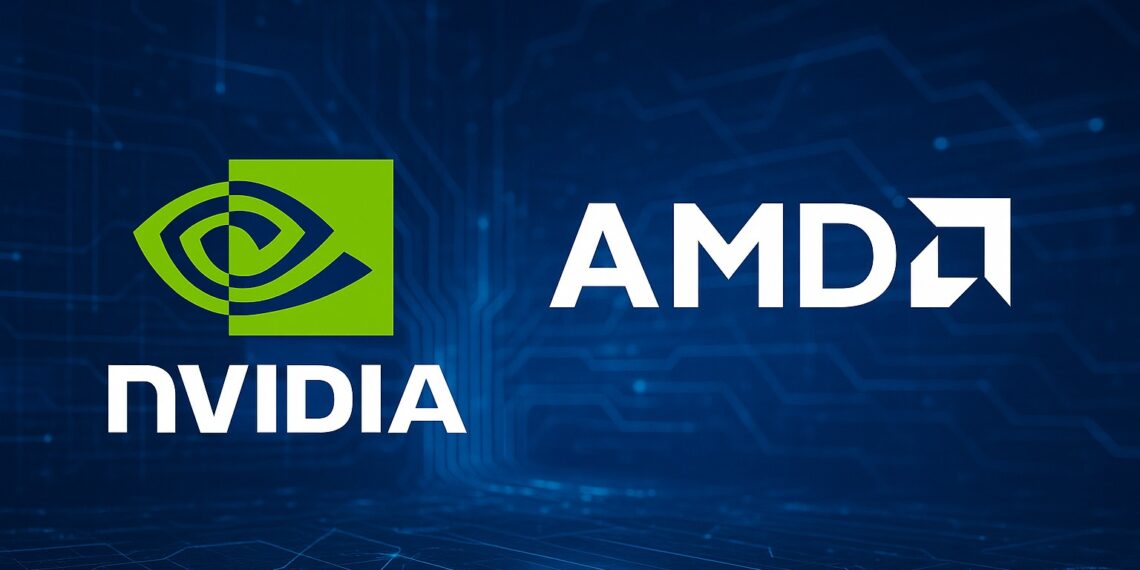HSBC has upgraded Nvidia to Buy and raised its price target, while reiterating a bullish stance on AMD with a higher target as well. The bank’s call underscores confidence that AI infrastructure spending remains durable, with demand broadening beyond hyperscalers to enterprises and sovereign projects.
What changed—and why
- Broader AI demand: The customer mix for advanced accelerators is widening, supporting a multi-year investment cycle rather than a one-off surge.
- Improving availability: Packaging and memory capacity additions are easing supply frictions, allowing vendors to convert strong backlogs into recognized revenue.
- Product cadence: Successive platform launches (new GPU architectures and system-level upgrades) keep performance-per-watt and total cost of ownership trending in the right direction, sustaining replacement and expansion cycles.
- Second-source momentum: AMD’s accelerator roadmap is benefiting from buyers seeking diversification across vendors, particularly for inference and mixed-workload clusters.
Market read-through
- Leadership vs. breadth: The upgrade validates Nvidia’s leadership while acknowledging AMD’s growing role as a credible alternative in large-scale deployments.
- Ecosystem halo: Upgrades to GPU outlooks tend to lift adjacent markets—high-bandwidth memory, networking, power delivery, and data-center infrastructure.
- Capital spending runway: With AI use cases moving from pilots to production (copilots, search, recommendation, RAG), budgets look more recurring and less discretionary.
What to watch next
- Shipments and lead times: Evidence that newer accelerator platforms are shipping on schedule and that delivery windows are normalizing.
- Perf/Watt in the real world: Token throughput at strict latency SLOs for LLM inference; efficiency gains matter more than peak synthetic scores.
- Software maturity: Compiler stacks, quantization toolchains, and observability features that reduce time-to-deployment.
- Enterprise adoption: Case studies outside Big Tech—financials, telecom, healthcare, and government—indicating diffusion of demand.
- Supply chain resilience: Continued progress on advanced packaging and HBM capacity to prevent bottlenecks.
Risks to the bullish view
- Capex digestion: A pause in cloud or sovereign spending could create air pockets in unit growth.
- Competition and substitutes: Faster performance catch-up by rivals—or traction for custom silicon—could pressure margins and share.
- Supply hiccups: Any setback in packaging or memory availability would cap upside and delay deployments.
- Macroeconomic sensitivity: A weaker growth backdrop could slow enterprise deal cycles and lengthen ROI thresholds.
Investment takeaways
- For growth investors: The call supports the thesis that AI remains a multi-year platform shift with multiple beneficiaries across the stack.
- For quality/defensive growth: Focus on vendors with clear pricing power, deep software moats, and visibility into recurring workloads.
- For value and cyclicals: Consider second-order plays (memory, substrates, power systems) where capacity additions translate directly into revenue.
Conclusion
HSBC’s upgrade on Nvidia and target hike for AMD reinforce a simple message: the AI accelerator cycle is broadening and lengthening. Nvidia’s platform leadership looks intact, while AMD’s role as a strategic second source continues to firm up. If supply keeps improving and enterprise deployments scale, both names remain well positioned into the next leg of AI infrastructure investment.
FAQ
Why did Nvidia get an upgrade now?
Because demand appears broader and stickier, supply constraints are easing, and the product roadmap supports continued performance and efficiency gains.
What’s the case for AMD?
Rising second-source demand, improving software support, and a credible accelerator roadmap that targets both training and inference.
Is this just a hyperscaler story?
No—enterprises and public-sector buyers are increasingly budgeting for AI workloads, which diversifies demand and reduces cyclicality.
What could derail the thesis?
Capex pauses, competitive surprises, or fresh supply constraints in packaging and high-bandwidth memory.
Disclaimer
This article is for informational purposes only and does not constitute investment advice, an offer, or a solicitation to buy or sell any securities. Markets and company fundamentals can change rapidly. Always do your own research and consider consulting a licensed financial advisor.










